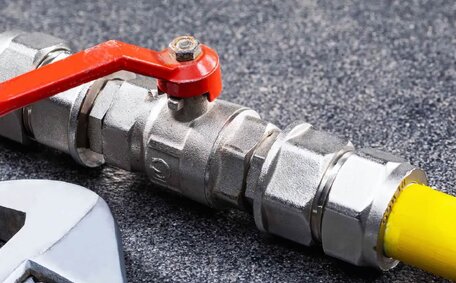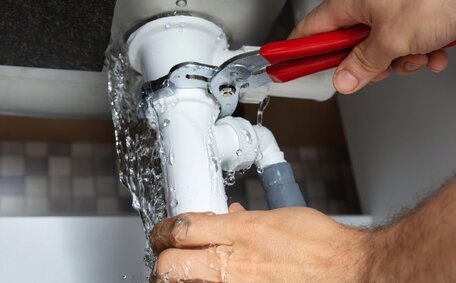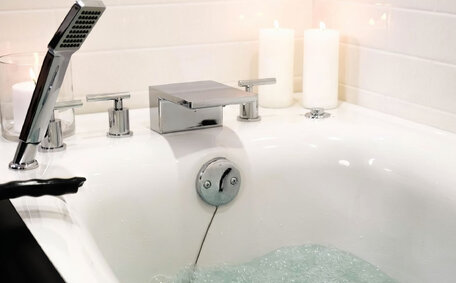Introduction to Leaky and Noisy Toilets
Dealing with a leaky toilet or a flush toilet noise issue can be incredibly frustrating. The persistent sound of running water or random noise after flushing squanders money with every flush, not to mention the embarrassment when guests detect odd sounds from your bathroom.
As Mosman Plumbing points out, A leaking toilet can hike up your water bill by over $100 per year if neglected. Catching and applying a fix to fix leaking toilets early is crucial to avoid extensive plumbing repairs down the road.
Mosman Plumbing has over 25 years of experience providing premium plumbing services to Mosman residences and businesses. Our fully accredited and insured craftspeople have contended with an array of plumbing needs, including drippy, clamorous commodes, and possess the acumen to figure out the root cause swiftly, averting expensive harm.
In this guide, we’ll walk through the common problems that cause toilets to leak or make noises and provide actionable steps you can take to resolve them. With a few practical DIY solutions and fixes, you can fix issues and put a stop to a toilet running unnecessarily, ultimately basking in tranquillity within your lavatory.
Common Causes of Leaky Toilets
There are several common issues that can make a toilet make noise, resulting in wasted tankless water and money:
Worn Flapper Valve
A damaged or warped rubber flapper valve at the tank’s base can prevent a watertight seal, leading to water leaking into the bowl.
Faulty Fill Valve
The fill valve, often called the ballcock, refills the tank after flushing. A malfunctioning fill valve, which fails to cut off water, leads to tank overflow and subsequent leaks.
Poorly Adjusted Float
An improperly adjusted fill valve float, set too high, can cause the tank to overfill and subsequently water to spill into the overflow tube.
Should you need assistance, Mosman Plumbing’s licenced technicians are equipped to identify and remedy your toilet’s water leaks. Email us or call 1300 349 338 to schedule an appointment.
Fixing a Faulty Flapper
If you use your knowledge to pinpoint a defective flapper as the culprit behind your leaky toilet, here’s the method to arrest leaks in the water tank with a basic DIY project.
Inspect the Flapper Seal
Begin by turning off the water supply with the shut-off valve, then flush to drain the tank. Examine the fill valve seal, also known as the valve cap, for signs of damage or mineral buildup.
Remove the toilet tank lid and set it aside carefully.
Should the flapper be impaired or fail to form a proper seal, learn how to select a suitable replacement. Purchase a durable flapper made of chlorinated polypropylene or chlorinated polyethylene rather than natural rubber, which becomes worn out faster.
Detach the Lift Chain
Find the metal or plastic arm that connects the flapper to the water heater flush lever via a chain. Loosen the lift chain from this arm so you can fully remove the flapper.
Install New Flapper
Fit the new flapper over the flush valve and press it down to create a secure seal with the rubber gasket. Reconnect the lift chain, ensuring it’s not too long with about 1/2" of slack, so the chain is loose when the flapper is closed.
Once you’ve reconnected your water supply, run several test flushes to verify the leak is mended, ensuring no unwanted water enters the bowl pre-flush.
Replacing a dilapidated flapper is one method where a noisy toilet can be silenced, muting the bothersome making noise after flush sound and halting a running toilet. However, if your toilet keeps having persistent leak or toilet noises issues beyond this quick fix, please email or call our Mosman plumbing professionals.
Replacing a Worn Fill Valve
If you determine the fill valve toilet component is causing leaks, replacing this part is a straightforward fix. Start by shutting off the water supply valve behind or near the toilet.
Flush the toilet so the tank empty. Use a sponge to remove any leftover water from the water line.
Remove Existing Fill Valve
Disconnect the water supply line and detach it from the tank. Unhook the refill tube from the overflow pipe and unscrew the lock nut or screws securing the fill valve to remove it.
Install New Fill Valve
Position your new top valve, also called the fill valve, in the tank and hand tighten the lock nut or screws. Adjust the float cup or arm if needed to set the correct refill level.
Attach the refill tube to the overflow pipe. Connect the water supply line. Turn the shutoff valve to resume water flow and allow the tank to refill.
Carry out several test flushes to ensure there are no leaks. If the issue persists, reach out for professional diagnosis and repair assistance.
Common Causes of Noisy Toilets
Your toilet making noise can be a common problem that’s frustrating and embarrassing when guests hear loud sounds coming from your bathroom. Here are some common causes and insights on how to fix a noisy toilet:
High Water Pressure
High water pressure can induce noises like water hammer during flushing, leading to valve vibrations. Fitting a pressure-reducing valve can help control the intensity of water flow.
While the toilet fill valve tops up the tank, it might cause toilet hissing or sound like a whistle if accumulated sediment impedes a proper seal. Replacing old fill valves reduces noises.
Mineral Deposits
Calcium deposits on various toilet parts can obstruct water flow and cause whistling or spraying noises. Regular cleanings every few weeks help reduce the noise when your toilet makes those pesky sounds.
Loose Toilet Mounting
A toilet that moves when you sit indicates loose installation, allowing water to splash into the bowl and cause noise. Securely reseating the toilet can reduce the making noise when used.
If you’re struggling and need help, and simple DIY troubleshooting tips don’t fix toilet issues, contact the professionals at Mosman Plumbing. Our licenced technicians can inspect your toilet and determine the exact cause of noises to recommend solutions.
Adjusting the Water Level
Ensuring the correct water level in your toilet tank is crucial to prevent scenarios that can cause all your toilet to experience water leaks, overflows, and excess noise. If the water level is higher than recommended or too low, simple adjustments can get things back on track.
According to Mosman Plumbing, set the water level to roughly 2.5 to 4 cm below the overflow tube.
How to Adjust the Water Level
Start by shutting off the water supply valve behind or near the toilet. Flush to empty the tank.
Locate the fill valve, adjustable via a float cup or arm, and ensure no mineral deposits are causing continual toilet running. Make small incremental adjustments to adjust water level and allow the tank to fully refill to check your progress.
Bending this arm down slightly will lower the water level. Pushing it up will increase the level.
Target having the water 1 to 1.5 inches or 2.5 to 4 cm below the top of the overflow tube. Avoid going too low or the flush performance may suffer.
Upon completion, replace the tank lid, reintroduce water supply, and conduct several test flushes for a new toilet level, ensuring the operation is sound and free from undue noises due to imbalanced water levels.
Clearing Clogs and Fixing Pipes
Blocked drains and pipes can cause leaks, overflows, and strange noises from your toilet. Plunging or using chemical drain cleaners might offer short-term fixes, but permanent relief requires addressing the root cause.
Identifying Clogged Pipes
Signs your toilet’s pipes are clogged include:
- Water pooling around the toilet’s base
- Gurgling noises from pipes
- Toilet backing up and overflowing
- Toilet flushing sluggishly
Fixing Clogged Pipes
If a plunger fails to dislodge the clog, the obstruction may be deeper within your pipes. Clogs in the trap, drain line or sewer line may require disassembling the toilet to snake the pipes clear or use a high powered drain jetting service to forcefully flush out the blockage.
Replacing corroded or severely clogged pipes can also remedy long-standing drainage problems. Our professional plumbers have the specialised equipment to locate and address issues; any given plumbing problem can be a source of clogs, leaks, and noise.
For prompt and efficient hydro jetting drain cleaning or repairs of chronic pipe blockages, contact the team at Mosman Plumbing. With over 25 years of plumbing expertise, we’re equipped to manage any plumbing challenges, accurately diagnosing and remedying toilet and pipe clogs.
When to Call a Professional Plumber
Even if you’ve tried all the troubleshooting tips and DIY fixes covered in this article, your toilet may still leak or make noises persistently. Here are some signs it’s time to call in a professional plumber for help:
- Water continues leaking out of the tank into the bowl no matter what parts you replace
- Loud noise when toilet and vibrating pipes happen when toilet flushed
- Toilet sewage backs up overflowing onto the floor despite plunging efforts
- You’ve replaced fill valves, flappers and made adjustments but issues continue
- Leaks originate below the toilet at the floor level or come from inside walls
While small-scale toilet repairs can be cost-effective, persistent leaks may require professional intervention to avoid water damage and sewer issues. Mosman Plumbing’s expert technicians have the advanced tools and skills to accurately diagnose and fix troublesome toilet problems beyond basic fixes.
Our aim is to diagnose and resolve the underlying issues of leaks and noises comprehensively.
From drain blockages and pipe damage to bits and pieces falling into toilet, we handle it all.Email or call 1300 349 338 to schedule an inspection. With over 25 years serving Mosman, you can trust our licenced pros to solve frustrating toilet issues once the tank full.
Preventative Maintenance for Toilets
Consistent maintenance is vital for avoiding leaks, overflows, and noise, which could signal more serious toilet issues. Wondering why your toilet has that pesky issue? Here are some handy tips to keep your toilet in good working order:
Monthly Checks
- Conduct visual inspections for leaks, cracks, or water damage.
- Test flush the toilet to check for proper drainage and odd noises
- Check inside the toilet cistern for any deterioration or mineral deposits on the flapper seal.
- Ensure water level is 1-1.5 inches below overflow tube
Every 6 Months
- Thoroughly scrub interior of tank and bowl to prevent calcium and rust
- Use enzyme drain cleaner in the toilet to break down organic waste in the trap.
- Tighten any loose toilet mounting bolts or connections
Annually
- Replace flapper valve and fill valve for optimal performance
- Use plunger or drain snake to clear any persistent clogs
- Have a plumber perform comprehensive toilet inspection and tune-up
Act proactively, don’t wait for major leaks or clogs to occur.Mosman Plumbing offers reliable maintenance plans to keep your plumbing and toilets running smoothly for years to come.Contact us today to customise a schedule.
Our 25+ years’ experience equips us to pinpoint why toilets make specific noises, preventing costly future damages.






